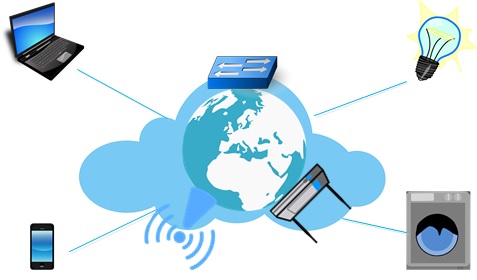
“Remote Control” means the connection and control of the embedded devices from a remote location through a wired or wireless network. It is becoming a must element for the IoT(Internet of Things) devices. You can find more than 50 contents related to remote control in WIZnet museum site.
In this posting, we will provide a simple guide how you can implement “Remote Control” function in your device using WIZnet products.
We can start the “Remote Control” by considering below
- What to control?
We can control all devices such as light, door lock, air conditioner, boiler and etc. - How to control?
GPIO, UART, SPI, S2C & PWM are normally used. - What kind of solution will be used for the connectivity (including Internet connectivity)?
– ZigBee, X20, Bluetooth are used for the local communication, and gateway device for the Internet connectivity.
– Without gateway, you can directly connect the device to Internet using Ethernet or WiFi
Here, we will explain how to develop remote control device using GPIO & WIZnet solutions (TCP/IP Ethernet & WizFi2xx WiFi)
Remote Control through GPIO
You can easily control GPIO just by changing high & low value, but should be careful of GPIO input voltage. GPIO normally operates with 3.3V & 5V tolerant.
If your device does not support 3.3V, you need to isolate the voltage. For example, if you connect the lamp operates with 220V to the MCU with 3.3V, the MCU will be critically damaged. To solve this kind of problem, voltage isolation is required.
A. using a relay
Connect the GPIO to V_in. If you control the Hign/Low, the electromagnet will turn on or off the switch that connects to +/-.
B. Using a Photo-Coupler
Photo-coupler is a device that used to transmit signals, data, or DC levels across a circuit interface while providing high isolation between input & output. It operates in the same way of the Relay.
Connect the PIN 2 to Ground, and PIN 3 &4 to the device to control. If you input High/Low to PIN 1, internal LED is on or off as PIN3 & 4 is connected or not.
WIZnet solution for Remote Control
A. TCP/IP Chip
WIZnet provides Fully Hardwired TCP/IP Ethernet controllers such as W5100, W5200, W5300 & W5500. You can select one of them for the Ethernet based remote control system. You can check the features and difference of each mode here.
B. WiFi Module
There are five WiFi products that WIZnet provides. Among them, we are recommending WizF210, WizFi220 & WizFi250 for the embedded system. Those products operate based on AT command and support the UART or SPI for MCU interface.
Examples from WIZnet Museum
We are introducing remote control examples from WIZnet Museum site.
A. LED Control through GPIO
Source : http://wiznetmuseum.com/portfolio-items/arduino-ethernet-shield-tutorial
B. Remote Control using Relay & GPIO
C. Remote control using GPIO & WizFi250
Source : http://wiznetmuseum.com/portfolio-items/control-moter-driver-using-wizfi250/







COMMENTS